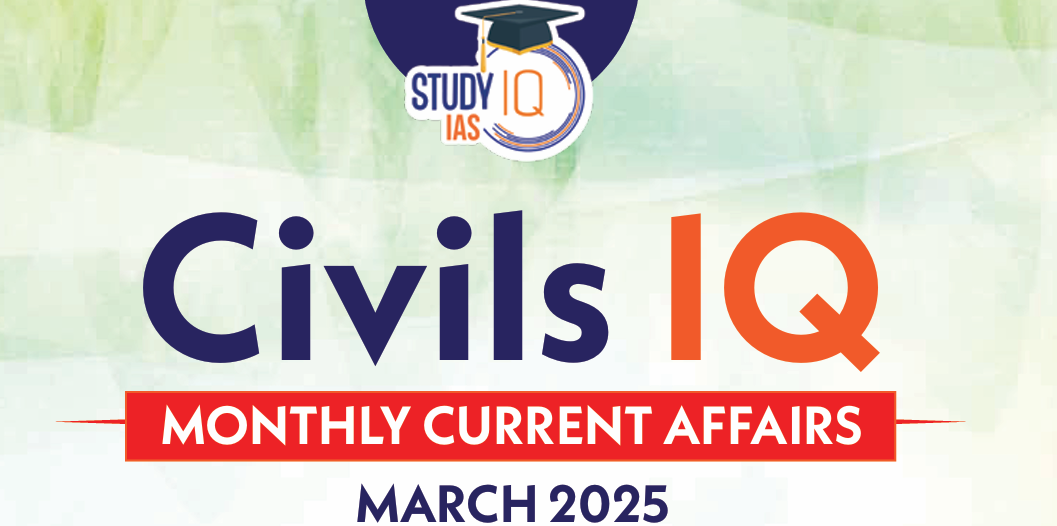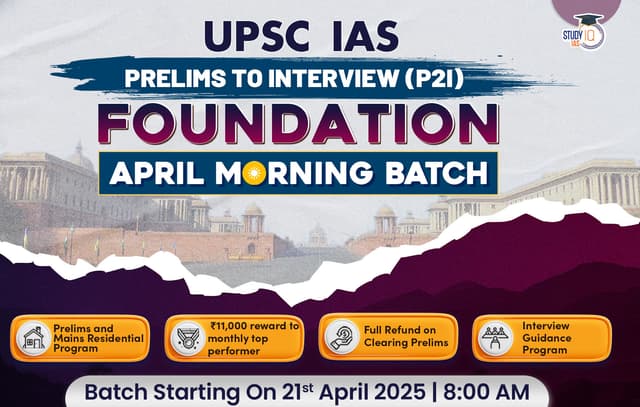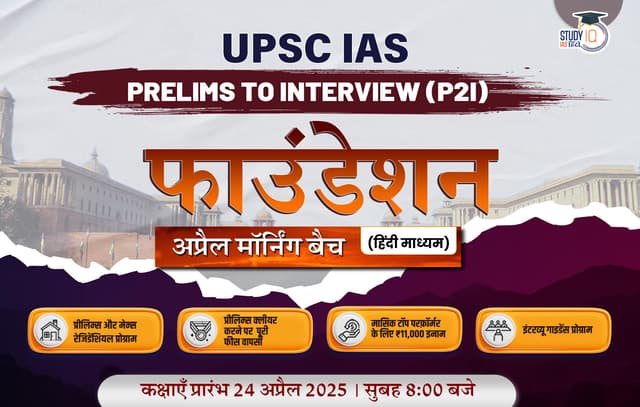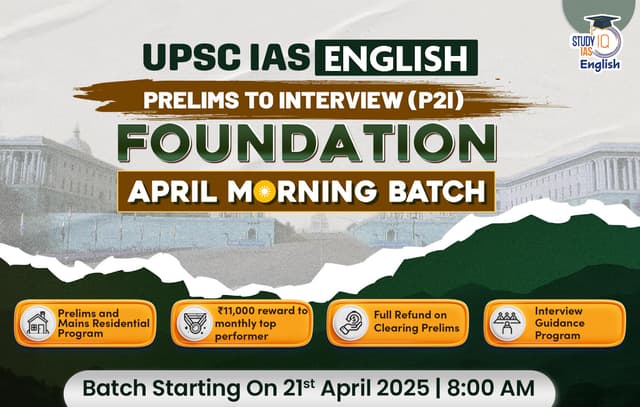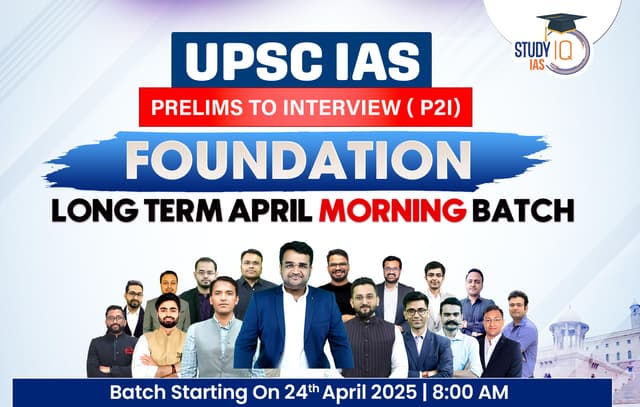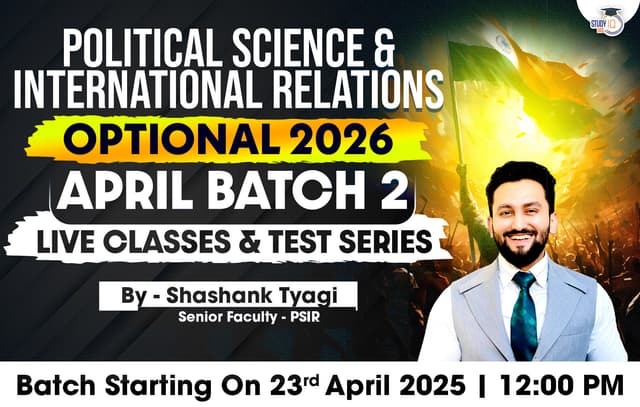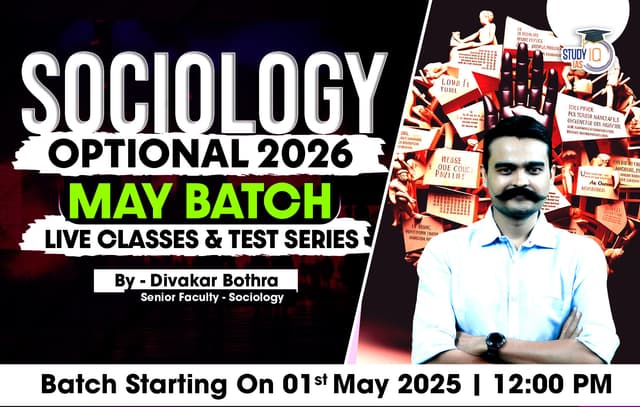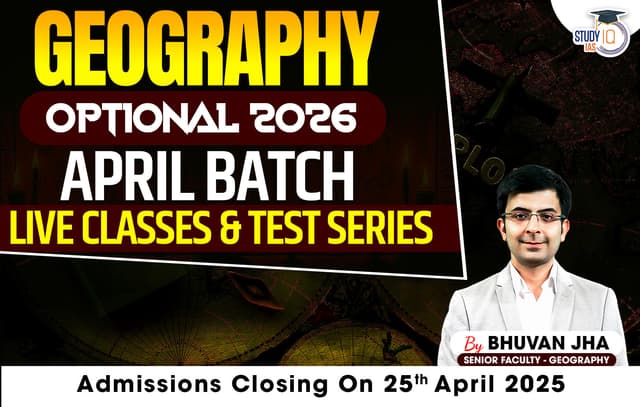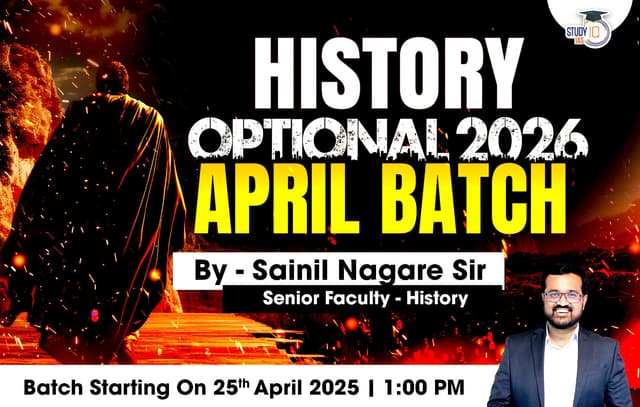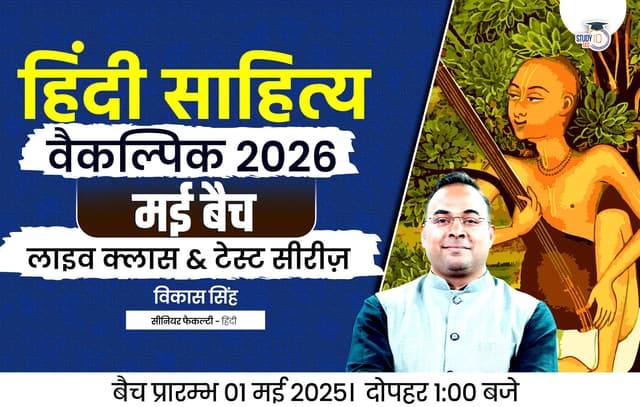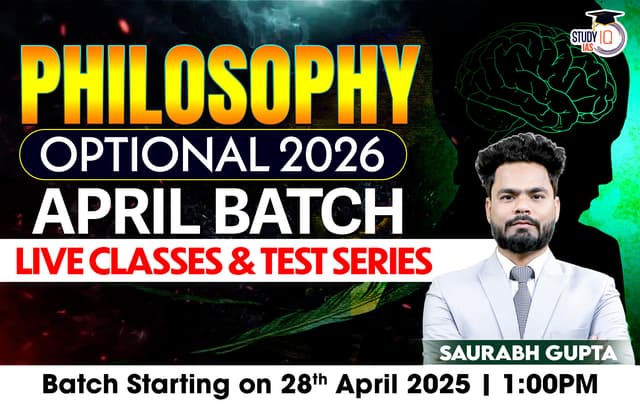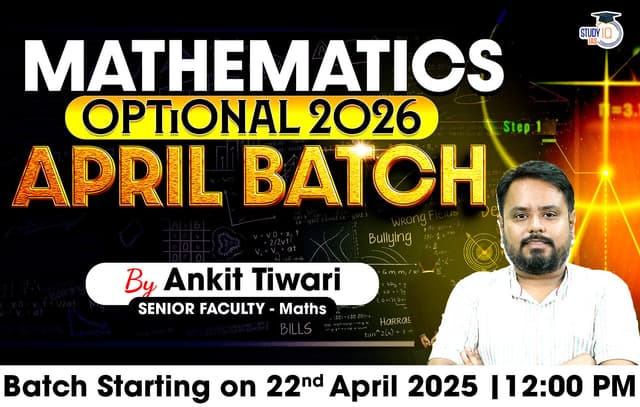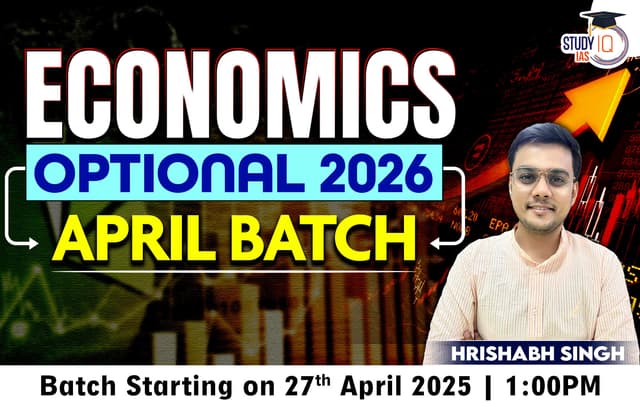Daily Quiz 22 February 2025
Quiz-summary
0 of 5 questions completed
Questions:
- 1
- 2
- 3
- 4
- 5
Information
- Click on – ‘Start Quiz’ button
- Solve Questions
- Click on ‘Next’ button
- Click on ‘Finish Quiz’ button
- Now click on ‘View Questions’ button – here you will see solutions and links.
- The test contains a total of 5 questions.
- Click on the most appropriate option to mark it as your answer.
- You will be awarded Two marks for each correct answer.
- You can change your answer by clicking on some other option.
- A Number list of all questions appears at the top side of the screen.
- You can access the questions in any order by clicking on the question number given on the number list.
- You can use rough sheets while taking the test.
- Do not use calculators, log tables, dictionaries, or any other printed/online reference material during the test.
- Do not click the button “Finish Quiz” before completing the test. A test once submitted cannot be resumed.
You have already completed the quiz before. Hence you can not start it again.
Quiz is loading...
You must sign in or sign up to start the quiz.
You have to finish following quiz, to start this quiz:
- 1
- 2
- 3
- 4
- 5
- Answered
- Review
-
Question 1 of 5
1. Question
1 pointsConsider the following:
1. Sorbent injection
2. Flue gas desulfurization (FGD)
3. Scrubbing system
How many of the above can be used as Sulphur dioxide pollution control technologies?Correct
Answer: C
Explanation:
- Point 1 is correct: Dry sorbent injection (DSI) is a viable technology for moderate sulphur dioxide (SO2) reduction on coal-fired boilers. Demonstrations and utility testing have shown SO2/HCl removals greater than 80% for systems using sodium-based sorbents. The most commonly used sodium-based sorbent is Trona.
- Point 2 is correct: Flue-gas desulfurization (FGD) is a scrubbing technique that uses an alkaline reagent (typically a sodium- or calcium-based alkaline regent) to remove SO2 from flue gas.
Point 3 is correct: The basic principle of a sulfur dioxide scrubber system is the removal of SO2 by using its chemical characteristics to combine with water.
Incorrect
Answer: C
Explanation:
- Point 1 is correct: Dry sorbent injection (DSI) is a viable technology for moderate sulphur dioxide (SO2) reduction on coal-fired boilers. Demonstrations and utility testing have shown SO2/HCl removals greater than 80% for systems using sodium-based sorbents. The most commonly used sodium-based sorbent is Trona.
- Point 2 is correct: Flue-gas desulfurization (FGD) is a scrubbing technique that uses an alkaline reagent (typically a sodium- or calcium-based alkaline regent) to remove SO2 from flue gas.
Point 3 is correct: The basic principle of a sulfur dioxide scrubber system is the removal of SO2 by using its chemical characteristics to combine with water.
-
Question 2 of 5
2. Question
1 pointsConsider the following statements:
- Sunni Muslims are those who wanted to select Caliph, by following the traditional Arab custom.
- Nizari Ismailis and DawoodiBohras are a subset of sunni branch of Islam.
- Twelvers, the Ismailis, and the Zaydis are the main denominations of Shia muslims.
How many of the above statements are correct?
Correct
Answer: B
Explanation:
- Statement 1 is correct: The historical split occurred 1400 years ago, following the death of Prophet Muhammad in Medina, in modern day Saudi Arabia. Muslims who wanted to select his successor, or Caliph, by following the traditional Arab custom (Sunna) formed into a group known as Sunnis. Others insisted the Prophet had designated his cousin and son-in-law Ali as his legitimate heir. This group was called Shia Ali, or ‘Party of Ali’, from which comes the word Shia.
- The two main branches of Islam differ fundamentally on matters of doctrine, law, ritual, and religious organisations. However, neither branch is a monolith.
- Statement 2 is not correct and statement 3 is correct: Among the Shias, for instance, there are three main denominations: the Twelvers, the Ismailis, and the Zaydis. All three trace the descent of Muhammad through a chain of Imams or religious teachers, but they differ in the specifics of what the line of descent comprises.
Among the Ismailis, there are two more subsects — the Nizari Ismailis and the DawoodiBohras. The fundamental difference between the two communities is that while the Nizaris trace the Prophet’s hereditary descent all the way to the Aga Khans, the DawoodiBohras recognise direct descent only till the 18th Imam, and follow today a line of Dais who are representatives of the concealed Imam.
Incorrect
Answer: B
Explanation:
- Statement 1 is correct: The historical split occurred 1400 years ago, following the death of Prophet Muhammad in Medina, in modern day Saudi Arabia. Muslims who wanted to select his successor, or Caliph, by following the traditional Arab custom (Sunna) formed into a group known as Sunnis. Others insisted the Prophet had designated his cousin and son-in-law Ali as his legitimate heir. This group was called Shia Ali, or ‘Party of Ali’, from which comes the word Shia.
- The two main branches of Islam differ fundamentally on matters of doctrine, law, ritual, and religious organisations. However, neither branch is a monolith.
- Statement 2 is not correct and statement 3 is correct: Among the Shias, for instance, there are three main denominations: the Twelvers, the Ismailis, and the Zaydis. All three trace the descent of Muhammad through a chain of Imams or religious teachers, but they differ in the specifics of what the line of descent comprises.
Among the Ismailis, there are two more subsects — the Nizari Ismailis and the DawoodiBohras. The fundamental difference between the two communities is that while the Nizaris trace the Prophet’s hereditary descent all the way to the Aga Khans, the DawoodiBohras recognise direct descent only till the 18th Imam, and follow today a line of Dais who are representatives of the concealed Imam.
-
Question 3 of 5
3. Question
1 pointsWhat is “Dunki Route,” recently seen in the news?
Correct
Answer: B
Explanation:
- The “donkey route” is a term used to describe the dangerous journey migrants take to reach the US or European countries in search of jobs and better living.
- “Donkey” route has been an open secret in Punjab for more than a decade. The term originates from the Punjabi word “dunki”, meaning to “hop from place to place”,
Incorrect
Answer: B
Explanation:
- The “donkey route” is a term used to describe the dangerous journey migrants take to reach the US or European countries in search of jobs and better living.
- “Donkey” route has been an open secret in Punjab for more than a decade. The term originates from the Punjabi word “dunki”, meaning to “hop from place to place”,
-
Question 4 of 5
4. Question
1 pointsUnder Article 200 of the Constitution of India, when a Bill has been passed by the Legislative Assembly of a State it shall be presented to the Governor. In this context, consider the following statements:
- The Governor can return the Money Bill for the re-consideration of the House.
- Governor has to take a decision on any Bill within 30 days of being presented with it.
- The Governor has to reserve for the consideration of the President any Bill which derogates from the powers of the High Court as to endanger the constitutional position.
How many of the above statements are correct?
Correct
Answer: A
Explanation:
- Statement 1 is not correct: Governor cannot return the Money Bill to the House for re-consideration as per Article 200.
- Statement 2 is not correct: There is no time limit mentioned under Article 200 for the Governor to give his/her decision. It simply states, when a Bill has been passed by the Legislative Assembly of a State or, in the case of a State having a Legislative Council, has been passed by both Houses of the Legislature of the State, it shall be presented to the Governor and the Governor shall declare either that he assents to the Bill or that he withholds assent therefrom or that he reserves the Bill for the consideration of the President.
- Statement 3 is correct: Article 200 states that the Governor shall not assent to, but shall reserve for the consideration of the President, any Bill which in the opinion of the Governor would, if it became law, so derogate from the powers of the High Court as to endanger the position which that Court is by this Constitution designed to fill.
Incorrect
Answer: A
Explanation:
- Statement 1 is not correct: Governor cannot return the Money Bill to the House for re-consideration as per Article 200.
- Statement 2 is not correct: There is no time limit mentioned under Article 200 for the Governor to give his/her decision. It simply states, when a Bill has been passed by the Legislative Assembly of a State or, in the case of a State having a Legislative Council, has been passed by both Houses of the Legislature of the State, it shall be presented to the Governor and the Governor shall declare either that he assents to the Bill or that he withholds assent therefrom or that he reserves the Bill for the consideration of the President.
- Statement 3 is correct: Article 200 states that the Governor shall not assent to, but shall reserve for the consideration of the President, any Bill which in the opinion of the Governor would, if it became law, so derogate from the powers of the High Court as to endanger the position which that Court is by this Constitution designed to fill.
-
Question 5 of 5
5. Question
1 pointsConsider the following statements:
- Pradhan Mantri Kaushal Vikas Yojana 4.0 (PMKVY 4.0), provides for reskilling and upskilling through the recognition of prior learning.
- Pradhan Mantri National Apprenticeship Promotion Scheme (PM-NAPS) provides for a certain stipend to be provided by the Union government through Direct Benefit Transfer (DBT) during the training period.
- Jan ShikshanSansthan (JSS) is a community-centric skilling initiative designed to make vocational training accessible particularly for women, rural youth, and economically disadvantaged groups.
How many of the above statements are correct?
Correct
Answer: C
Explanation:
- The Pradhan Mantri Kaushal Vikas Yojana 4.0 (PMKVY 4.0), the Pradhan Mantri National Apprenticeship Promotion Scheme (PM-NAPS), and the Jan ShikshanSansthan (JSS) Scheme will now become the three key components of the composite Skill India Programme.
- Statement 1 is correct: The PMKVY 4.0 provides short-term training, including on special projects, and reskilling and upskilling through the recognition of prior learning. Its target beneficiary is anywhere between 15 years and 59 years old. So far, more than 400 new courses have been introduced with a focus on emerging technologies and future skills, including artificial intelligence, 5G technology, cybersecurity, green hydrogen, and drone technology. To strengthen quality training and assessments, a national pool of one lakh assessors and trainers is being developed, ensuring standardisation and expertise across training centers.
- Statement 2 is correct: The PM-NAPS supports both apprentices and establishments in India, with 25% of the stipend, up to ₹1,500 per month per apprentice, to be provided by the Union government through Direct Benefit Transfer (DBT) during the training period. This scheme is designed for individuals aged 14 to 35 years.
Statement 3 is correct: The third component scheme, the JSS, is a community-centric skilling initiative designed to make vocational training accessible, flexible, and inclusive, particularly for women, rural youth, and economically disadvantaged groups, and caters to a age group of 15 years to 45 years. By delivering low-cost, doorstep training with flexible schedules, the JSS ensures that skilling opportunities reach those who need them the most, fostering both self-employment and wage-based livelihoods.
Incorrect
Answer: C
Explanation:
- The Pradhan Mantri Kaushal Vikas Yojana 4.0 (PMKVY 4.0), the Pradhan Mantri National Apprenticeship Promotion Scheme (PM-NAPS), and the Jan ShikshanSansthan (JSS) Scheme will now become the three key components of the composite Skill India Programme.
- Statement 1 is correct: The PMKVY 4.0 provides short-term training, including on special projects, and reskilling and upskilling through the recognition of prior learning. Its target beneficiary is anywhere between 15 years and 59 years old. So far, more than 400 new courses have been introduced with a focus on emerging technologies and future skills, including artificial intelligence, 5G technology, cybersecurity, green hydrogen, and drone technology. To strengthen quality training and assessments, a national pool of one lakh assessors and trainers is being developed, ensuring standardisation and expertise across training centers.
- Statement 2 is correct: The PM-NAPS supports both apprentices and establishments in India, with 25% of the stipend, up to ₹1,500 per month per apprentice, to be provided by the Union government through Direct Benefit Transfer (DBT) during the training period. This scheme is designed for individuals aged 14 to 35 years.
Statement 3 is correct: The third component scheme, the JSS, is a community-centric skilling initiative designed to make vocational training accessible, flexible, and inclusive, particularly for women, rural youth, and economically disadvantaged groups, and caters to a age group of 15 years to 45 years. By delivering low-cost, doorstep training with flexible schedules, the JSS ensures that skilling opportunities reach those who need them the most, fostering both self-employment and wage-based livelihoods.
Results
0 of 5 questions answered correctly
Your time:
Time has elapsed
You have reached 0 of 0 points, (0)
| Average score |
|
| Your score |
|
Categories
- Not categorized 0%
| Pos. | Name | Entered on | Points | Result |
|---|---|---|---|---|
| Table is loading | ||||
| No data available | ||||
Sharing is caring!

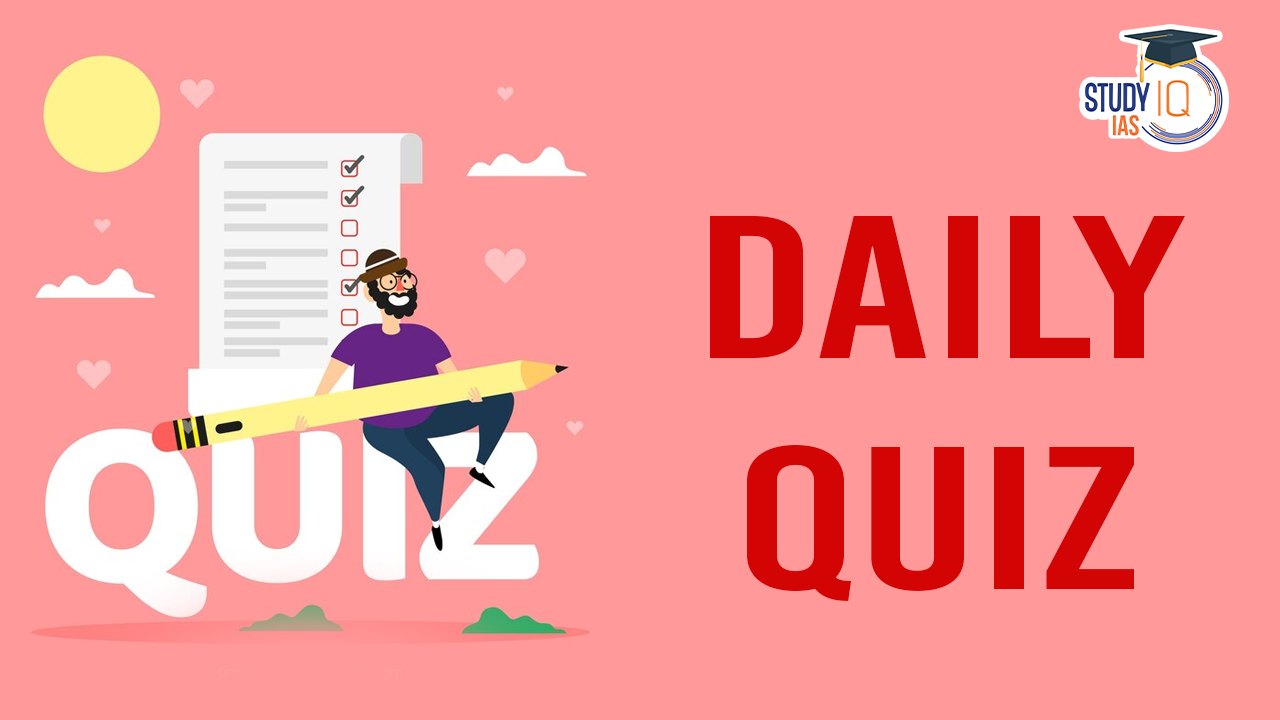
 Daily Quiz 18 April 2025
Daily Quiz 18 April 2025
 Daily Quiz 17 April 2025
Daily Quiz 17 April 2025
